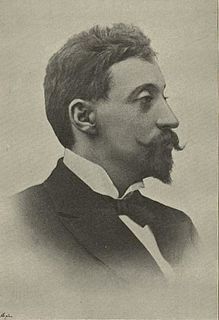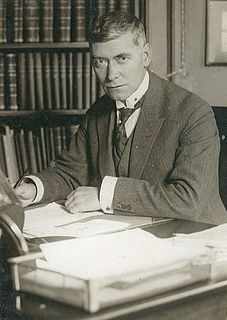Events in the year 1951 in Norway.

Cecilie Løveid is a Norwegian novelist, poet, playwright, and writer of children's books.

Max Tau was a German-Norwegian writer, editor, and publisher.
Johan Aschehoug Kiær (1869–1931) was a Norwegian paleontologist and geologist.
In 1910 Haakon VII serves his sixth year as King of Norway. On 1 February Wollert Konow takes over as Prime Minister after Gunnar Knudsen, who has held this position since 1908.
Events in the year 1913 in Norway.

Edvard Bull was a Norwegian historian and politician for the Labour Party. He took the doctorate in 1912 and became a professor at the University of Kristiania in 1917, and is known for writings on a broad range of subjects. In addition to his academic work, he is known for his work on Norsk biografisk leksikon. His Marxist leanings inspired him to take up a parallel political career, in the Labour Party. Situated on the radical wing in the 1910s, he was among the architects as the Labour Party denounced the Twenty-one Conditions in 1923 and reunited with the social democrats in 1927. He was the deputy party leader from 1923 to 1932, and served as Norwegian Minister of Foreign Affairs in Hornsrud's short-lived cabinet in 1928.

Francis Bull was a Norwegian literary historian, professor at the University of Oslo for more than thirty years, essayist and speaker, and magazine editor.

Gudmund Stenersen was a Norwegian painter and illustrator.

Helge Krog was a Norwegian journalist, essayist, theatre and literary critic, translator and playwright.
Det 20de Århundre was a periodical published by the Norwegian Labour Party.

Henrik Jæger was a Norwegian literary historian, literary critic and playwright.
Sigmund Moren was a Norwegian philologist, encyclopedist, literary critic, theatre critic and children's writer.
Finn Strømsted was a Norwegian poet and graphical artist. He made his literary debut in 1956 with the poetry collection Angelicafløyten. Among his other collections are Bidevind from 1961, Susquehanna Blues from 1971, and En fugl har tent meg from 1995.

Leif Sundt Rode was a Norwegian competitive rower, jurist, sports official, poet and playwright.

Johan Anthon Abraham Fjeldsted Dahl was a Norwegian bookseller and publisher. He was a patron of the arts and was co-founder of Oslo Kunstforening.
Events in the year 1779 in Norway.
Ragnar Kvam was a Norwegian journalist, novelist, translator and literary critic. He was born in Tønsberg and grew up in Drammen. After the Second World War he was journalist in the newspaper Fremtiden, and the Norwegian News Agency. He made his literary debut in 1950 with the novel Alle vil hjem. Among his other novels are De herjede menn from 1953, Den store stillheten from 1964, and Krystallnatten from 1970. He translated many books into Norwegian language, including works by George Orwell, Virginia Woolf, Graham Greene, Oscar Wilde, C. P. Snow and Erich Maria Remarque.

Karl Uchermann was a Norwegian painter and illustrator. He is best known for his portraits of animals, in particular dogs. He also painted altarpieces, and is credited for designing the world's first franking machine in 1901.











